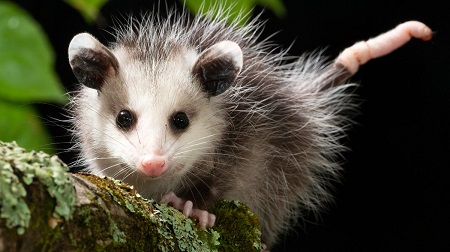When it comes to unique and intriguing animals, the opossum, or “Tñacuache” as it’s known in Latin America, stands out for its distinctive characteristics and cultural significance. This article delves into the life of the Tñacuache, exploring its biological traits, ecological role, and its place in Latin American folklore and culture.
What is a Tñacuache?
The Tñacuache is the Spanish name for the opossum, a marsupial native to the Americas. Opossums belong to the family Didelphidae, and their unique characteristics set them apart from other mammals. Known for their adaptability and distinctive appearance, Tñacuaches play a crucial role in their ecosystems.
Biological Traits of the Tñacuache
- Physical Characteristics: Opossums are easily recognizable by their prehensile tails, which they use to grasp and stabilize themselves in trees. They have a relatively small, pointed face, large ears, and a long, rat-like tail. Their fur varies in color but is generally a mix of gray and white.
- Size and Lifespan: Adult opossums typically range from 2 to 4 feet in length, including their tail. Their lifespan in the wild is relatively short, averaging about 2 to 4 years, though they can live longer in captivity.
- Diet and Behavior: Tñacuaches are omnivorous, feeding on a variety of foods including fruits, insects, small animals, and carrion. Their opportunistic feeding habits help them thrive in diverse environments. Opossums are also known for their unique defense mechanism of playing dead or “playing possum” when threatened, which can confuse potential predators.
- Reproduction: Female opossums have a unique reproductive system with a pouch where their underdeveloped young continue to grow after birth. They give birth to large litters of tiny, underdeveloped babies that crawl into the pouch for further development.
Ecological Role of the Tñacuache

The Tñacuache plays an important role in its habitat as a scavenger and pest controller. By feeding on carrion, opossums help in decomposing and recycling nutrients in the ecosystem. They also help control insect populations and can even reduce the prevalence of ticks and other parasites.
Cultural Significance of the Tñacuache
In Latin American folklore, the Tñacuache is more than just an animal—it’s a symbol with rich cultural meanings:
- Folktales and Legends: In various Latin American cultures, the Tñacuache appears in traditional stories and myths. These tales often depict the opossum as a cunning and resourceful character. For example, in some stories, the opossum is portrayed as a clever trickster who outsmarts other animals.
- Symbolism: The opossum is sometimes seen as a symbol of adaptability and survival. Its ability to thrive in a variety of environments and its unique defense mechanisms are admired traits in many cultures.
- Art and Music: The Tñacuache also finds its place in Latin American art and music. It is often featured in local folklore art, crafts, and even children’s songs, reflecting its cultural importance and the affection people have for this remarkable creature.
Conservation and Challenges
While Tñacuaches are relatively adaptable and resilient, they face challenges from habitat loss and environmental changes. Urbanization and deforestation can impact their natural habitats, making it crucial to promote conservation efforts to protect these valuable animals and their ecosystems.
Conclusion
The Tñacuache, or opossum, is a fascinating creature with a unique set of characteristics that make it stand out in the animal kingdom. From its ecological role as a scavenger and pest controller to its rich presence in Latin American folklore, the Tñacuache embodies both natural wonder and cultural significance. By understanding and appreciating the Tñacuache, we can foster greater respect for the biodiversity and cultural heritage of Latin America.
For more insights into fascinating animals and cultural stories, stay tuned to our blog and follow us for the latest updates.
